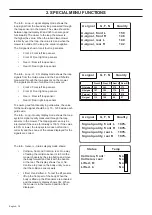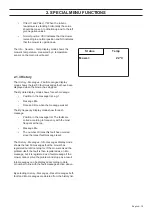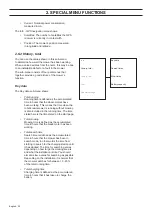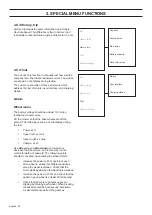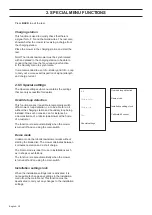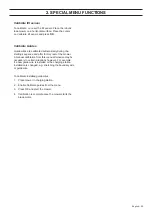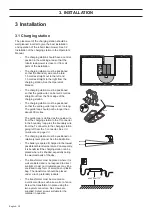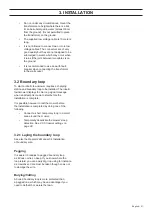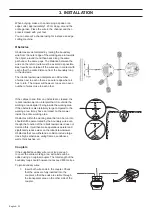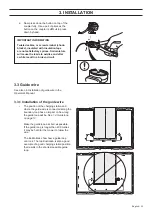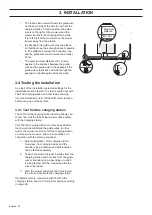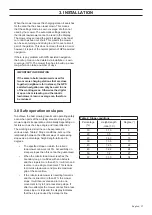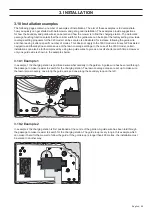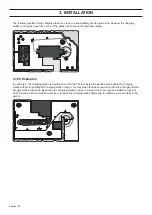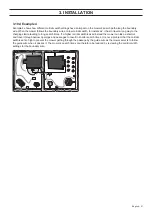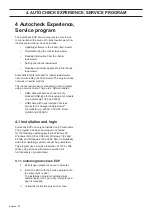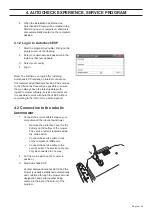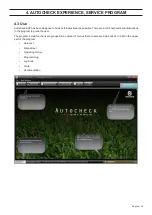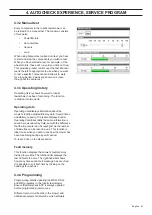
English - 32
When burying, make a channel using a spade or an
edge cutter, approximately 1-20 cm deep, around the
entire garden. Place the wire in the channel and then
press it closed with your feet.
You can also cut a channel using for instance an edge
cutting machine.
Obstacles
Obstacles are demarcated by routing the boundary
wire from the outer edge of the working area in towards
the object, around it and then back along the same
path under the same pegs. The distance between the
wires on the return route must be as small as possible.
Best results are obtained if the wires are in contact with
each other the entire distance from the boundary loop
to the obstacle.
The robotic lawnmower interprets an odd number
of wires next to each other as an outer edge where it
has to turn. The mower will however run over an even
number of wires close to each other.
If the cables to and from an obstacle are crossed, the
robotic lawnmower can interpret that it is outside the
working area despite it being inside the working area.
If the obstacle is also relatively large compared to the
working area, it may have an impact on the mower
inside the entire working area.
Obstacles within the working area that can be run into
should still be demarcated by the boundary wire even
though the function of the robotic lawnmower does not
demand this. It will then make operations quieter and
significantly reduce wear on the robotic lawnmower.
Obstacles that can withstand a collision include large
trees, high kerbstones, swing frames, sandboxes,
walls, thick bushes, etc.
Couplers
If the supplied boundary wire is not long enough
to cover the entire working area, extra wire can be
added using an original coupler. The total length of the
boundary loop should however not exceed 800 metres.
To join boundary wires:
1. Insert both wire ends in the coupler. Check
that the wires are fully inserted into the
coupler so that the ends are visible through
the transparent area on the other side of the
coupler.
3. INSTALLATION

